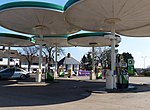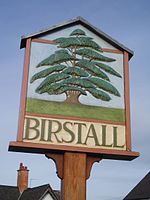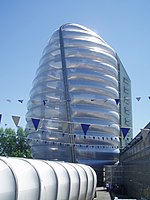Belgrave and Birstall railway station
1899 establishments in EnglandDisused railway stations in LeicestershireEngvarB from July 2022Former Great Central Railway stationsGreat Central Railway (preserved) ... and 5 more
Heritage railway stations in LeicestershirePages with no open date in Infobox stationRailway stations in Great Britain closed in 1963Railway stations in Great Britain opened in 1899Vague or ambiguous time from May 2015

Belgrave and Birstall railway station was a railway station opened by the Great Central Railway in 1899. It served the villages of Belgrave and Birstall in Leicestershire. It closed in 1963. In 1991 Leicester North railway station was opened immediately to the south of Belgrave and Birstall railway station by the preserved Great Central heritage railway. It is representative of the 1960s when the line was under the control of British Railways Midland Region. It is the southern terminus of the railway.
Excerpt from the Wikipedia article Belgrave and Birstall railway station (License: CC BY-SA 3.0, Authors, Images).Belgrave and Birstall railway station
Astill Drive, Leicester Mowmacre Hill
Geographical coordinates (GPS) Address Website Nearby Places Show on map
Geographical coordinates (GPS)
| Latitude | Longitude |
|---|---|
| N 52.668677777778 ° | E -1.1329777777778 ° |
Address
Birstall Golf Club
Astill Drive
LE4 2PA Leicester, Mowmacre Hill
England, United Kingdom
Open on Google Maps










